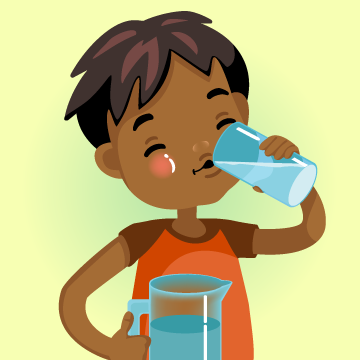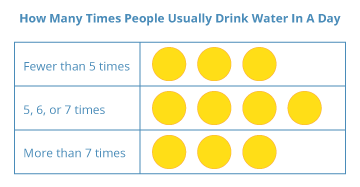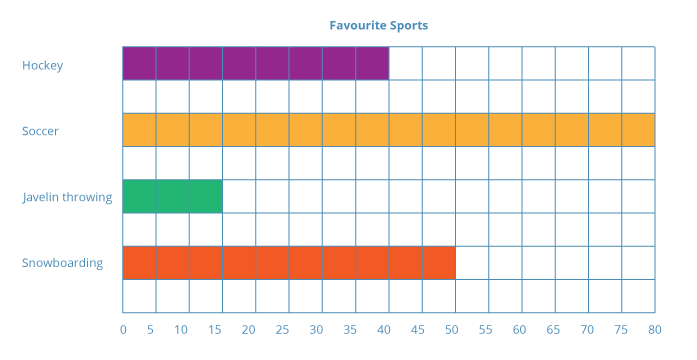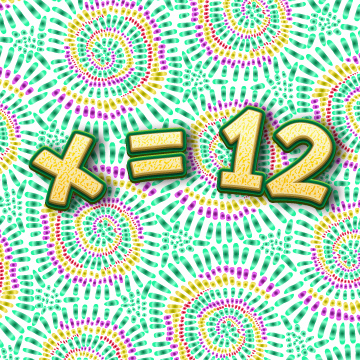Open Questions
These open questions focus on algebra and data and are appropriate for students from Kindergarten to Grade 8.
Grades K–2

Open Question #1
You have a pan balance. You put linking cubes on each side, and the pans balance. What is a total number of linking cubes you might have used? What is a total number you could not have used? Sample answer: I could have had 6 linking cubes on each side and used 12 altogether. I could not have used 7 cubes since 4 and 3 would not balance, 5 and 2 would not balance, 6 and 1 would not balance, and 7 and 0 would not balance.
Open Question #2
Use counters to create a concrete graph that you think might show how 10 Grade 2 students might answer this question: How many times do you usually drink water in a day? Tell why your graph makes sense. Sample answer: I think that I drink around 6 times a day, but I know some kids don’t drink water as much as they drink milk or juice or things like that. And I know some kids look like they’re drinking from their water bottle all the time. So I just figured most kids are like me, but there are a bunch who drink less or more.
I made a group on my graph that bunched 5, 6, or 7 times together since it’s hard to remember exactly how many times I drink in a day.
I think that I drink around 6 times a day, but I know some kids don’t drink water as much as they drink milk or juice or things like that. And I know some kids look like they’re drinking from their water bottle all the time. So I just figured most kids are like me, but there are a bunch who drink less or more.
I made a group on my graph that bunched 5, 6, or 7 times together since it’s hard to remember exactly how many times I drink in a day.Grades 3–5

Open Question #3
The missing number in one multiplication equation is 3 less than the missing number in another equation. What could the two equations be? Sample answer: My first equation is 4 × ☐ = 16. My second one is 4 × ☐ = 28.
Open Question #4
A scaled bar graph shows data in four categories. There is a total of 37 squares coloured in. One bar is twice as high or long as another. What might the bar graph be about? What could the heights or lengths of each bar be? How many people does each bar represent? Sample answer: I think the graph could be about favourite sports. My categories are hockey, soccer, javelin throwing, and snowboarding. The lengths of the bars are 8, 16, 3, and 10. I used a scale of 5, so the bars represent 40, 80, 15, and 50 people.
The lengths of the bars are 8, 16, 3, and 10. I used a scale of 5, so the bars represent 40, 80, 15, and 50 people.
Grades 6–8

Open Question #5
The variable in two algebraic expressions is equal to 12. The value of one expression is 2 more than double the value of the other. What might the two expressions be?
Sample answer:
My expressions were 3x – 1 and 6x. If x = 12, the value of the first expression is 35 and the value of the second one is 72. 72 is 2 more than 2 × 35.
